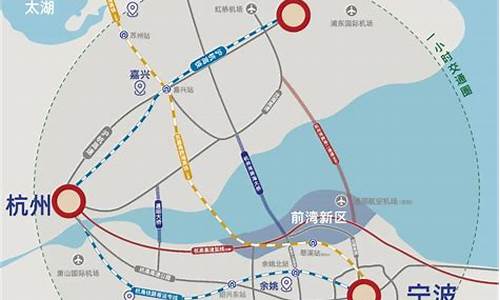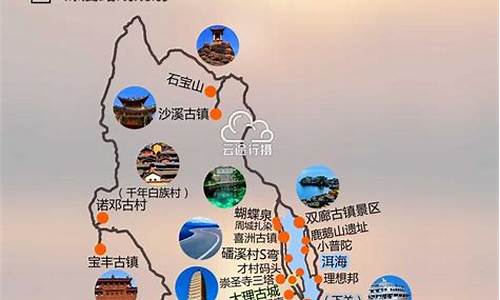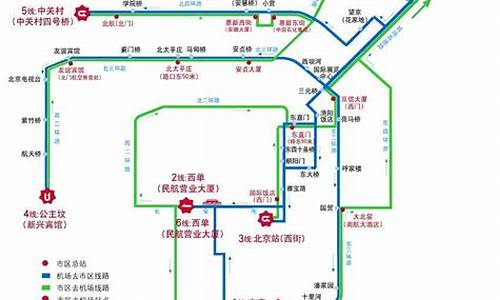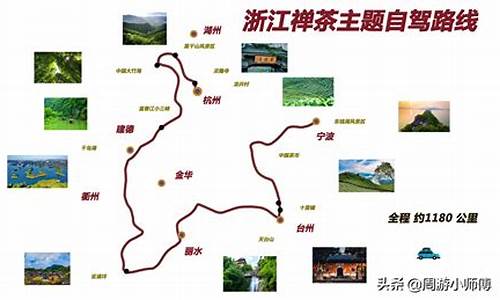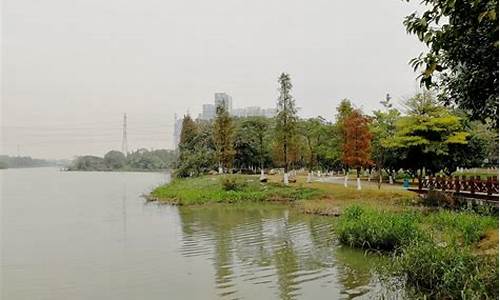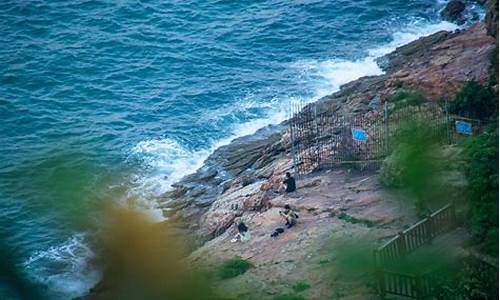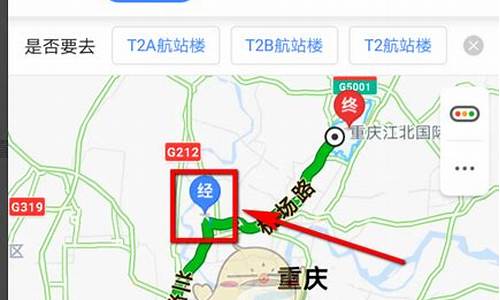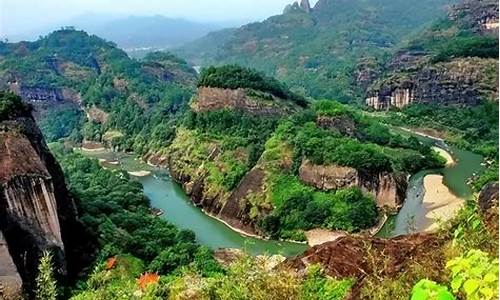去北京旅游攻略英文_去北京旅游攻略英文作文
好久不见了,今天我想和大家探讨一下关于“去北京旅游攻略英文”的话题。如果你对这个领域还不太熟悉,那么这篇文章就是为你准备的,让我们一起来探索其中的奥秘吧。
1.旅游景点北京鸟巢介绍英文 北京鸟巢介绍英语
2.北京英文介绍旅游景点作文 介绍北京的旅游景点英语
3.介绍北京景点的英文信
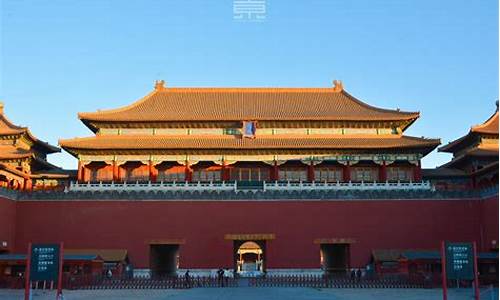
旅游景点北京鸟巢介绍英文 北京鸟巢介绍英语
鸟巢的介绍英文版,50字就行
2008年北京奥运会主体育场—“鸟巢”
—— Beijing National Stadium (Bird's Nest/Olympic Stadium)
“鸟巢”位于北京奥林匹克公园内、北京城市中轴线北端的东侧,建筑面积25·8万平方米。除了承担奥运会开、闭幕式任务外,还将在这里进行田径、男子足球决赛等奥运会的重要比赛。这个体育场能容纳观众10万人,其中临时坐席2万个。奥运会后,可承担重大体育比赛、各类常规赛事以及非竞赛项目,是北京奥运会的一座标志性建筑,是北京奥运会留下的宝贵遗产,同时也将成为北京市民广泛参与体育活动及享受体育**的大型专业场所。
英文介绍
The Beijing National Stadium, also known as the bird's nest will be the main track and field stadium for the 2008 Summer Olympics and will be host to the Opening and Closing ceremonies. In 2002 Government officials engaged architects worldwide in a design competition. Pritzker Prize-winning architects Herzog de Meuron collaborated with ArupSport and China Architecture Design Research Group to win the competition. The stadium will seat as many as 100,000 spectators during the Olympics, but this will be reduced to 80,000 after the games. It has replaced the original intended venue of the Guangdong Olympic Stadium. The stadium is 330 metres long by 220 metres wide, and is 69.2 metres tall. The 250,000 square metre (gross floor area) stadium is to be built with 36 km of unwrapped steel, with a combined weight of 45,000 tonnes. The stadium will cost up to 3.5 billion yuan (422,873,850 USD/ 325,395,593 EUR). The ground was broken in December 2003, and construction started in March 2004, but was halted by the high construction cost in August 2004.
In the new design, the roof of the stadium had been omitted from the design. Experts say that this will make the stadium safer, whilst reducing construction costs. The construction of the Olympic buildings will continue once again in the beginning of 2005.
In depth
The stadium's appearance is one of synergy, with no distinction made between the facade and the superstructure. The structural elements mutually support each other and converge into a grid-like formation - almost like a bird's nest with its interwoven twigs. The spatial effect of the stadium is novel and radical, yet simple and of an almost archaic immediacy, thus creating a unique historical landmark for the Olympics of 2008.
The stadium was conceived as a large collective vessel, which makes a distinctive and unmistakable impression both from a distance and when seen from up close. It meets all the functional and technical requirements of an Olympic National Stadium, but without communicating the insistent sameness of technocratic architecture dominated by large spans and digital screens.
Visitors walk through this formation and enter the spacious ambulatory that runs full circle around the stands. From there, one can survey the circulation of the entire area including the stairs that access the three tiers of the stands. Functioning like an arcade or a concourse, the lobby is a covered urban space with restaurants and stores that invite visitors to stroll around. Just as birds stuff the spaces between the woven twigs of their nests with a soft filler, the spaces in the structure of the stadium will be filled with inflated ETFE cushions. Originally, on the roof, the cushions were to be mounted on the outside of the structure to make the roof completely weatherproof, but the roof has been omitted from the design in 2004.
鸟巢的英文介绍
Beijing National Stadium also known as the National Stadium, or colloquially as the Bird's Nest, is a stadium in Beijing, China. The stadium was designed for use throughout the 2008 Summer Olympics and Paralympics. Located in the Olympic Green, the $423 million stadium is the world's largest steel structure. The design was awarded to a submission from the Swiss architecture firm Herzog de Meuron in April 2003, after a bidding process that included 13 final submissions.
鸟巢的英文名和介绍
国家体育场鸟巢(National Stadium),位于北京奥林匹克公园中心区南部,为2008年北京奥运会的主体育场。工程总占地面积21公顷,场内观众坐席约为91000个。
举行了奥运会、残奥会开闭幕式、田径比赛及足球比赛决赛。奥运会后成为北京市民参与体育活动及享受体育**的大型专业场所,并成为地标性的体育建筑和奥运遗产。
体育场由雅克·赫尔佐格、德梅隆、以及李兴刚等设计,由北京城建集团负责施工。体育场的形态如同孕育生命的“巢”和摇篮,寄托着人类对未来的希望。设计者们对这个场馆没有做任何多余的处理,把结构暴露在外,因而自然形成了建筑的外观。
扩展资料
鸟巢场馆结构:
1,基座
基座与体育场的几何体合二为一,如同树根与树。行人走在平缓的格网状石板步道上,步道延续了体育场的结构肌理。步道之间的空间为体育场来宾提供了服务设施。
2,屋顶
体育场的空间效果新颖激进,但又简洁古朴。体育场的外观就是纯粹的结构,立面与结构是统一的。各个结构元素之间相互支撑,汇聚成网格状,就象编织一样,将建筑物的立面,楼梯,碗状看台和屋顶融合为一个整体。
3,包厢
舒适豪华的装修布置,优质周到的配套服务,清晰良好的观看视野是国家体育场包厢品质的保障。它不仅提供了一个亲临其境的最佳观赛场所,更为社会企业和各界名流搭建一个交际、公关、答谢客户的社交平台。
百度百科-鸟巢
北京英文介绍旅游景点作文 介绍北京的旅游景点英语
北京旅游景点用英语介绍
Beijing is a city with a very long history. Grand palace exemplifies, layout, regulation, richly luxurious elegant buildings, there are many rare relics collection, is our country ancient architecture and culture, the essence of art."The man", not to Beijing Great Wall, like to swim, Shanghai not god is unthinkable. So far, including Nixon, Margaret thatcher, more than 300 people had boarded the world famous badaling in here, you can miss shanhe thorn?Beijing has too many sites to discovery, go for a walk。
长城 The Great Wall
故宫 The Palace Museum(TheForbidden City)
人民大会堂 Great Hall of the people
颐和园 The Summer Palace
香山 The Fragrant Hill
天安门广场 Tian An Men Square
人民英雄纪念碑 Monument to the People's heroes
毛主席纪念堂 The Memorial Hall of Chairman Mao
天坛 The Temple of Heaven
雍和宫 Lama Temple
亚运村 Asian Games Village
圆明园 Garden of Gardens
民族文化宫 The Nationalities Cultural Palace
十三陵 The Ming Tombs
首都体育馆 The Capital Gymnasium
中国人民历史博物馆 Museum of Chinese History and the Chinese Revolution
中国人民歌名军事博物馆 Military Museum of the Chinese People's Revolution
农业展览馆 The Agriculture Exhibition Hall
中国美术馆 The Chinese Art Gallery
卢沟桥 Marco Polo Bridge(Lugou bridge)
中华世纪坛 China Millennium Monument
紫檀博物馆 China red sandalwood museum
用英语介绍北京的景点 北京的景点用英语介绍
1、北京故宫是中国明清两代的皇家宫殿,旧称紫禁城,位于北京中轴线的中心,是中国古代宫廷建筑之精华。
The the Imperial Palace of Beijing is the imperial palace of the two dynasties in Ming and Qing Dynasties, formerly known as the Forbidden City, located in the center of Beijings central axis. It is the cream of ancient Chinese palace architecture.
2、北京故宫以三大殿为中心,占地面积72万平方米,建筑面积约15万平方米,有大小宫殿七十多座,房屋九千余间。是世界上现存规模最大、保存最为完整的木质结构古建筑之一。
Beijing Palace Museum is centered on three main halls, covering an area of 720,000 square meters, with a construction area of about 150,000 square meters. It has more than 70 palaces and more than 9,000 houses. It is one of the largest and most complete ancient wooden structures in the world.
3、北京故宫于明成祖永乐四年(1406年)开始建设,以南京故宫为蓝本营建,到永乐十八年(1420年)建成。
The Beijing Palace Museum was built in 1406 in Yongle, Chengzu, Ming Dynasty. It was built on the basis of the Nanjing Palace Museum and completed in 1420 in Yongle, Ming Dynasty.
4、它是一座长方形城池,南北长961米,东西宽753米,四面围有高10米的城墙,城外有宽52米的护城河。紫禁城内的建筑分为外朝和内廷两部分。
It is a rectangular city pool, 961 meters long north and south, 753 meters wide East and west, surrounded by a wall 10 meters high, and 52 meters wide moat outside. The buildings in the Forbidden City are divided into two parts: the Outer Dynasty and the Inner Court.
5、外朝的中心为太和殿、中和殿、保和殿,统称三大殿,是国家举行大典礼的地方。
The center of the foreign Dynasty is the Hall of Taihe, the Hall of Zhonghe and the Hall of Baohe, which are collectively called the three halls.
6、内廷的中心是乾清宫、交泰殿、坤宁宫,统称后三宫,是皇帝和皇后居住的正宫。
They are the places where the national ceremonies are held. The center of the Inner Court is the Qianqing Palace, Jiaotai Palace and Kunning Palace, which are collectively called the Hou Three Palaces and are the main palace where emperors and queens live.
北京著名景点,,一定要英文的啊
1、Summer Palace 颐和园
2、The Great Wall 长城
3、The Temple of Heaven 天坛
4、Forbiden City/The Palace Museum 故宫
5、Tian`anmen Squre 天安门广场
6、Beihai Park 北海
7、Xiangshan Park 香山公园
8、The nest 鸟巢
9、北海公园 Beihai Park
10、故宫博物院 the Palace Museum
11、革命历史博物馆 the Museum of Revolutionary History
12、Forbidden City紫禁城
13、Imperial College国子监
14、Drum Tower鼓楼
15、Old Summer Palace圆明园
16、Ming Tombs十三陵
用英文列出北京的名胜古迹
1、故宫
北京故宫是中国明清两代的皇家宫殿,旧称紫禁城,位于北京中轴线的中心,是中国古代宫廷建筑之精华。北京故宫以三大殿为中心,占地面积72万平方米,建筑面积约15万平方米,有大小宫殿七十多座,房屋九千余间。是世界上现存规模最大、保存最为完整的木质结构古建筑之一。
The Forbidden City in Beijing is the royal palace of the Ming and Qing Dynasties in China. It was formerly known as the Forbidden City.
It is located in the center of Beijing's central axis and is the essence of ancient Chinese palace architecture.
The Forbidden City in Beijing is centered on the three main halls. It covers an area of 720,000 square meters and has a construction area of about 150,000 square meters.
There are more than 70 large and small palaces and more than 9,000 houses. It is one of the largest and most preserved ancient wooden structures in the world.
2、长城
长城,又称万里长城,是中国古代的军事防御工程,是一道高大、坚固而连绵不断的长垣,用以限隔敌骑的行动。长城不是一道单纯孤立的城墙,而是以城墙为主体,同大量的城、障、亭、标相结合的防御体系。
The Great Wall, also known as the Great Wall, is a military defense project in ancient China.
It is a tall, sturdy and continuous long raft that is used to limit enemy riding. The Great Wall is not a purely isolated city wall, but a defense system that combines a city wall as the main body and a large number of cities, barriers, pavilions, and standards.
3、天坛
天坛,在北京市南部,东城区永定门内大街东侧。占地约273万平方米。天坛始建于明永乐十八年,清乾隆、光绪时曾重修改建。为明、清两代帝王祭祀皇天、祈五谷丰登之场所。
Temple of Heaven, in the south of Beijing, east of Yongdingmennei Street, Dongcheng District.
Covers an area of about 2.73 million square meters. The Temple of Heaven was built in the 18th year of Ming Yongle. It was rebuilt in the Qing Emperor Qianlong and Guangxu.
It is the place where the emperors of the Ming and Qing dynasties worshipped the Emperor and prayed for the harvest of the grain.
4、明十三陵
明十三陵,世界文化遗产,全国重点文物保护单位,国家重点风景名胜区,国家AAAAA级旅游景区。
明十三陵坐落于北京市昌平区天寿山麓,自永乐七年五月始作长陵,到明朝最后一帝崇祯葬入思陵止,其间230多年,先后修建了十三座皇帝陵墓、七座妃子墓、一座太监墓。共埋葬了十三位皇帝、二十三位皇后、二位太子、三十余名妃嫔、两位太监。
Ming Tombs, world cultural heritage, national key cultural relics protection units, national key scenic spots, national AAAAA level tourist attractions.
The Ming Tombs are located in Tianshou Mountain, Changping District, Beijing.
From the beginning of Yongle in May of the 7th year of the Yongle, the last emperor of the Ming Dynasty, Chongzhen was buried in Siling.
In the meantime, more than 230 emperors’ tombs were built. Seven scorpions tomb, a tomb of the eunuch.
A total of thirteen emperors, twenty-three empresses, two princes, more than 30 monks, and two eunuchs were buried.
5、颐和园
颐和园,中国清朝时期皇家园林,坐落在北京西郊,与圆明园毗邻。它是以昆明湖、万寿山为基址,以杭州西湖为蓝本,汲取江南园林的设计手法而建成的一座大型山水园林,也是保存最完整的一座皇家行宫御苑,被誉为“皇家园林博物馆”,也是国家重点旅游景点。
The Summer Palace, the royal garden of the Qing Dynasty in China, is located in the western suburbs of Beijing, adjacent to Yuanmingyuan.
It is based on Kunming Lake and Wanshou Mountain, and is based on Hangzhou West Lake.
It is a large-scale landscape garden built by the design method of Jiangnan Garden. It is also the most preserved royal palace, known as the “Royal Garden Museum”. It is also a national key tourist attraction.
百度百科-北京
介绍北京景点的英文信
北京故宫英语作文100字
北京故宫英语作文:
A Visit to the National Palace Museum.
Recently I spent over three hours looking, reading and enjoying the exhibits at the National Palace Museum located in the suburbs. Many local and foreign visitors go there daily to take pictures outside and spend endless hours inside. No cameras are allowed inside, but you can buy you can buy colored slides of the exhibits in the gift shop downstairs.
There is a very large collection of beautiful jades. Also, there is an ancient bronze vessel exhibit. Some of the exhibits are changed regularly for special collections such as porcelain and silk paintings.
My attention was mainly in the room with the wall-size slide show describing some archeological discoveries from pre-history tine. Also, the oracle bones' exhibit was very good; there seemed to be an endless amount of rare, beautiful, interesting, and fascinating things.
译文
参观故宫博物院。
最近,我花了三个多小时在位于郊区的故宫博物院观看、阅读和欣赏展品。许多本地和外国游客每天都去那里在外面拍照,在里面度过无尽的时光。里面不允许有照相机,但你可以在楼下的礼品店买到展品的彩色幻灯片。
有大量美丽的玉器收藏。此外,还有一个古代青铜器展览。一些展品会定期更换,以获得瓷器和丝绸绘画等特殊收藏品。
我的注意力主要集中在房间里,墙壁大小的幻灯片描述了一些史前考古发现。甲骨文展览也很好,;似乎有无数的稀有、美丽、有趣和迷人的东西。
介绍一处你旅游过地方(如北京)英语作文5句话
北京的旅游景点较多,可以尽情游玩,将去几个地方,紫禁城、王府井大街、颐和园、长城、Ming Tombs、鸟潮、水立方、其他好的清华大学、北京大学、天坛、北海公园、颐和园、雍和宫、大观园等。恭王府,如果你喜欢古玩的话,那潘家园古玩市场是要去看看的,那里有无数名人的房子,各种博物馆,还有老北京的胡同也挺有特色的,而且还有很多地方因为时间有限没有列出来,晚上也有很多好玩的地方,如三里屯酒吧街、后海酒吧街,还有著名的美食街——鬼街,让您充满人间美味
有关介绍北京名胜古迹的英语作文
A Trip To Beijing
On summer holiday my parents took me to Beijing.We stayed at Huabei Hotel.On the first day,we went to the Great Wall.The Great Wall is very long and old.It has millions of bricks.Each brick is very big and heavy.Lots of people from different countries like climbing the Great Wall.We felt very tired when we climbed to the top of the Great Wall.
We also went to the Palace Museum.The Palace Museum has 9999 palaces.It has a very long history.I bought a lot of souvenirs of the Palace Museum.What nice palaces these are!I visited the Palace Museum and felt excited.If you want to know more about the Palace Museum,you can go to Beijing and have a look.
The following days,we went to the Summer Palace,Tian Tan,North Lake and Xiang Hill.I now know more about the history of China.I also like modern Beijing.The 2008 Olympic Games will be held in Beijing.
Later,I went back with my parents by train.I really enjoyed the trip to Beijing.
I like this trip!
You can make summer into winter .
关于北介绍北京景点的英语作文。100字母
写作思路及要点:多方面介绍北京景点特色。
The Forbidden City, also known as the Forbidden City, is located in the center of Beijing. It is the imperial palace of the Qing and Ming Dynasties. It is the best preserved and largest imperial palace in the world.
故宫又称为紫禁城,位于北京的中心,是清明两代的皇宫,是世界上现在保存最好,规模最大的帝王宫殿。
We got to the square first. It's huge! There are five exquisite white marble arch bridges in the square.
我们先到了广场,广场大极了!广场上有五座精巧的汉白玉拱桥。
Standing on the square, looking up, a magnificent palace stands in front of us. This is Taihe hall. The hall of Supreme Harmony has a glittering throne and majestic pillars, which makes people feel shocked.
站在广场上,抬头一看,一座金碧辉煌的宫殿耸立在眼前,这就是太和殿。
Then we passed the Qianqing palace, which was the emperor's bedroom, and went into the Royal Garden, where there was a pavilion.
太和殿内有金光闪闪的宝座,有气势磅礴的金柱,给人的感觉很震撼。
There are rockeries and green trees beside the pavilion. It's very beautiful
之后我们走过了乾清宫,那是皇帝的卧室,又走进了御花园,御花园里有一座亭子。
The Palace Museum not only embodies the wisdom and talents of the ancient people, but also shows us the history of the ancient imperial dynasty.
故宫不但凝聚了古代人民的智慧和才干,而且向我们展示了古代皇朝的历史。
What strikes one first in a bird's -eye view of Beijing proper is a vast tract of golden roofs flashing brilliantly in the sun with purple walls occasionally emerging amid them and a stretch of luxuriant tree leaves flanking on each side. That is the former Imperial Palace, popularly known as the Forbidden City, from which twenty-four emperors of the Ming and Qing Dynasties ruled China for some 500 years——from1420 to 1911. The Ming Emperor Yong Le, who usurped the throne from his nephew and made Beijing the capital, ordered its construction, on which approximately 10,000 artists and a million workmen toiled for 14 years from 1406 to 1420. At present, the Palace is an elaborate museum that presents the largest and most complete ensemble of traditional architecture complex and more than 900,000 pieces of court treasures in all dynasties in China. Located in the center of Beijing, the entire palace area, rectangular in shape and 72 hectares in size, is surrounded by walls ten meters high and a moat 52 meters wide. At each corner of the wall stands a watchtower with a double-eave roof covered with yellow glazed tiles. The main buildings, the six great halls, one following the other, are set facing south along the central north-south axis from the Meridian Gate, the south entrance, to Shenwumen, the great gate piercing in the north wall. On either side of the palace are many comparatively small buildings. Symmetrically in the northeastern section lie the six Eastern Palaces and in the northwestern section the six Western Palaces. The Palace area is divided into two parts: the Outer Court and the Inner Palace. The former consists of the first three main halls, where the emperor received his courtiers and conducted grand ceremonies, while the latter was the living quarters for the imperial residence. At the rear of the Inner Palace is the Imperial Garden where the emperor and his family sought recreation. The main entrance to the Palace is the Meridian Gate(1), which was so named because the emperor considered himself the "Son of the Heaven" and the Palace the center of the universe, hence the north-south axis as the Meridian line going right through the Palace. The gate is crowned with five towers, commonly known as the Five-Phoenix Towers(2), which were installed with drums and bells. When the emperor went to the Temple of Heaven, bells were struck to mark this important occasion. When he went to the Ancestral Temple, it was the drums that were beaten to publicize the event.
Beyond the Meridian Gate unfolds a vast courtyard across which the Inner Golden Water River runs from east to west. The river is spanned by five bridges, which were supposed to be symbols of the five virtues preached by Confucius——benevolence, righteousness, rites, intelligence, and fidelity(3).
At the north end of the courtyard is a three-tiered white marble terrace, seven meters above the ground, on which, one after another, stand three majestic halls; the Hall of Supreme Harmony(4), the Hall of Complete Harmony(5), and the Hall of Preserving Harmony
Notes:
1. the Meridian Gate 午门
2. the Five-Phoenix Towers 五凤楼
3. benevolence, righteousness, rites, intelligence, and fidelity 仁、义、礼、智、信
4. the Hall of Supreme Harmony 太和殿
5. the Hall of Complete Harmony 中和殿
6. the Hall of Preserving Harmony 保和殿
7. the Palace of Heavenly Purity 乾清宫
8. the Hall of Union 交泰殿
9. the Palace of Earthly Tranquility 坤宁宫
这是故宫的英文解说
好了,今天关于“去北京旅游攻略英文”的话题就讲到这里了。希望大家能够对“去北京旅游攻略英文”有更深入的认识,并且从我的回答中得到一些帮助。
声明:本站所有文章资源内容,如无特殊说明或标注,均为采集网络资源。如若本站内容侵犯了原著者的合法权益,可联系本站删除。

